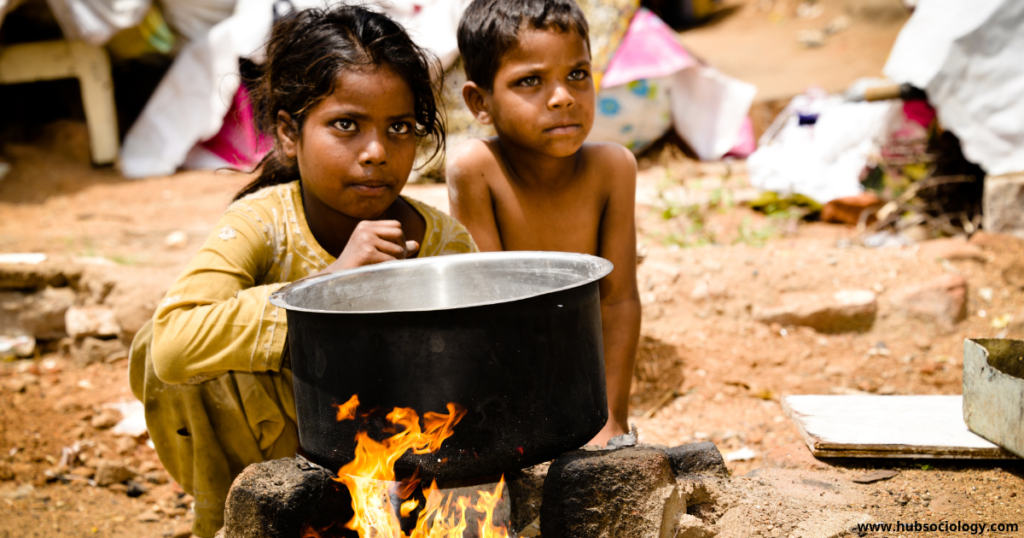Introduction

Social exclusion and marginalization are critical concepts in sociology that describe the processes through which individuals or groups are systematically pushed to the fringes of society, denied access to resources, opportunities, and participation in social, economic, and political life. These phenomena reinforce inequality and perpetuate cycles of poverty, discrimination, and disempowerment.
From a sociological standpoint, social exclusion is not merely about economic deprivation but also involves cultural, political, and institutional mechanisms that prevent certain groups from fully integrating into society. Marginalization, on the other hand, refers to the relegation of specific populations to a lower social standing, often due to factors such as race, caste, gender, disability, or economic status.
This article explores the sociological dimensions of social exclusion and marginalization, examining their causes, manifestations, and consequences. It also discusses theoretical perspectives and potential solutions to address these pressing social issues.
Theoretical Perspectives on Social Exclusion and Marginalization
Sociologists have developed various theories to explain social exclusion and marginalization, each offering unique insights into how these processes operate.
1. Functionalism
Functionalist theorists, such as Émile Durkheim, view society as a system where each part has a role in maintaining stability. From this perspective, some degree of exclusion may be seen as inevitable, as societies establish norms that define who belongs and who does not. However, excessive exclusion can lead to dysfunction, such as increased crime or social unrest, threatening societal cohesion.
2. Conflict Theory
Conflict theorists, inspired by Karl Marx, argue that social exclusion is a tool used by dominant groups to maintain power and control over marginalized populations. Economic elites, for example, may perpetuate exclusionary practices to exploit lower-class workers, ensuring a cheap labor force. Similarly, racial, gender, and caste-based hierarchies reinforce exclusion to preserve privilege.
3. Symbolic Interactionism
This micro-level perspective examines how social exclusion is experienced through everyday interactions. Labels such as “criminal,” “illegal immigrant,” or “uneducated” can stigmatize individuals, leading to self-fulfilling prophecies where marginalized groups internalize negative stereotypes, further entrenching their exclusion.
4. Social Constructionism
This approach highlights how social realities, including exclusion, are constructed through discourse and institutional practices. Policies, media representations, and cultural narratives shape perceptions of who is “deserving” or “undeserving” of societal inclusion.
Forms and Manifestations of Social Exclusion and Marginalization
Social exclusion and marginalization take multiple forms, affecting different groups in various ways.
1. Economic Exclusion
Economic marginalization occurs when individuals or communities are denied access to employment, fair wages, or financial services. For example:

- Unemployment and Underemployment: Certain groups (e.g., ethnic minorities, disabled individuals) face systemic barriers in the job market.
- Housing Discrimination: Redlining and gentrification displace low-income families, pushing them into impoverished neighborhoods with limited resources.
2. Political Exclusion
Marginalized groups often lack representation in political decision-making, leading to policies that ignore their needs. Examples include:
- Voter Suppression: Laws that disproportionately affect minority voters (e.g., strict ID requirements).
- Lack of Political Representation: Women, indigenous peoples, and lower-caste groups are often underrepresented in government.
3. Cultural and Social Exclusion
Cultural marginalization occurs when dominant groups devalue the traditions, languages, or identities of minority communities. Examples include:
- Language Barriers: Indigenous or immigrant communities may face discrimination for not speaking the dominant language.
- Religious Discrimination: Minority religions may be stigmatized or banned from public expression.
4. Institutional Exclusion
Systemic biases in institutions (education, healthcare, criminal justice) reinforce exclusion. For instance:
- Education: Schools in low-income areas often receive fewer resources, perpetuating cycles of poverty.
- Criminal Justice System: Racial profiling and harsher sentencing for minorities highlight institutionalized discrimination.
5. Spatial Exclusion
Marginalized groups are often geographically segregated, leading to “ghettoization” or rural neglect. Urban slums, remote villages without infrastructure, and segregated neighborhoods exemplify spatial exclusion.
Causes of Social Exclusion and Marginalization
Multiple factors contribute to social exclusion, often intersecting in complex ways.
1. Structural Inequalities
Historical injustices (e.g., colonialism, slavery, caste systems) create long-term disparities that persist through generations.
2. Discrimination and Prejudice
Racism, sexism, homophobia, and casteism systematically exclude certain groups from equal opportunities.
3. Globalization and Neoliberalism
While globalization has brought economic growth, it has also exacerbated inequality by favoring wealthy corporations while displacing vulnerable workers.
4. Policy Failures
Weak social welfare systems, lack of affirmative action, and regressive taxation deepen exclusion.
5. Technological Changes
Automation and digitalization can marginalize low-skilled workers who lack access to retraining programs.
Consequences of Social Exclusion and Marginalization
The effects of exclusion are far-reaching, impacting both individuals and society as a whole.
1. Poverty and Economic Instability
Excluded groups face higher poverty rates, limited upward mobility, and intergenerational deprivation.
2. Mental and Physical Health Issues
Marginalization leads to stress, depression, and reduced access to healthcare, shortening life expectancy.
3. Social Unrest and Crime
Frustration from exclusion can fuel protests, riots, or increased crime rates as marginalized groups seek alternative means of survival.
4. Erosion of Social Cohesion
When large segments of society feel alienated, trust in institutions declines, weakening democratic governance.
5. Loss of Human Potential
Talented individuals from excluded groups may never realize their potential due to systemic barriers, resulting in a loss of innovation and productivity for society.
Addressing Social Exclusion and Marginalization
Combating exclusion requires multi-faceted approaches at individual, institutional, and policy levels.
1. Policy Interventions
- Affirmative Action: Quotas or reserved seats in education and employment for marginalized groups.
- Universal Basic Services: Ensuring access to healthcare, education, and housing for all.
- Anti-Discrimination Laws: Strong enforcement of laws against racial, gender, and caste-based discrimination.
2. Economic Empowerment
- Job Training Programs: Skill development for excluded communities.
- Microfinance Initiatives: Providing financial resources to marginalized entrepreneurs.
3. Social and Cultural Inclusion
- Promoting Diversity: Encouraging inclusive media representation and multicultural education.
- Community Engagement: Grassroots movements that empower marginalized voices.
4. Institutional Reforms
- Police and Judicial Reforms: Reducing bias in law enforcement.
- Inclusive Education: Curriculum reforms that reflect diverse histories and perspectives.
5. Global Solidarity
International cooperation to address migration, refugee crises, and economic disparities between nations.
Conclusion
Social-exclusion and marginalization are deeply entrenched in societal structures, perpetuating cycles of disadvantage for vulnerable populations. A sociological understanding reveals that these are not natural phenomena but rather products of historical, economic, and political forces. Addressing them requires systemic change—through equitable policies, institutional reforms, and cultural shifts toward inclusivity.

A just society is one where no individual is denied the opportunity to thrive based on arbitrary social divisions. By dismantling exclusionary practices and fostering solidarity, we can move toward a more inclusive and equitable world.
Topic Related Questions
5-Mark Questions (Short Answer)
- Define social exclusion and marginalization.
- What are the key differences between social exclusion and marginalization?
- Name three theoretical perspectives on social exclusion and briefly explain one.
- List five groups that commonly face social exclusion.
- How does economic exclusion manifest in society?
- What is the role of discrimination in social marginalization?
- Give two examples of institutional exclusion.
- How does symbolic interactionism explain social exclusion?
- What is spatial exclusion? Provide an example.
- How does globalization contribute to social exclusion?
10-Mark Questions (Brief Essay-Type)
- Discuss the causes of social exclusion with suitable examples.
- Explain how social exclusion affects mental and physical health.
- Analyze the role of caste and race in perpetuating marginalization.
- How does political exclusion impact marginalized communities?
- Discuss the relationship between poverty and social exclusion.
- Evaluate the effectiveness of affirmative action in reducing social exclusion.
- How do education systems contribute to social exclusion?
- Explain the concept of cultural exclusion with examples.
- Discuss the impact of technological advancements on marginalized groups.
- How can grassroots movements help in combating social exclusion?
15-Mark Questions (Long Essay-Type)
- Examine social exclusion from the perspective of conflict theory and functionalism.
- Critically analyze the consequences of social exclusion on societal cohesion and development.
- Discuss the various forms of social exclusion and suggest measures to address them.
- How do institutional mechanisms reinforce social exclusion? Provide examples from education and criminal justice systems.
- Evaluate the role of government policies in reducing marginalization of disadvantaged groups.
- “Marginalization is not just an economic issue but a multidimensional problem.” Discuss.
- How does globalization both contribute to and alleviate social exclusion?
- Analyze the intersectionality of gender, caste, and class in social marginalization.
- Discuss the impact of social exclusion on democracy and political participation.
- What are the long-term solutions to eradicate social exclusion and promote inclusive development?

6 thoughts on “Social Exclusion and Marginalization: A Sociological Perspective”